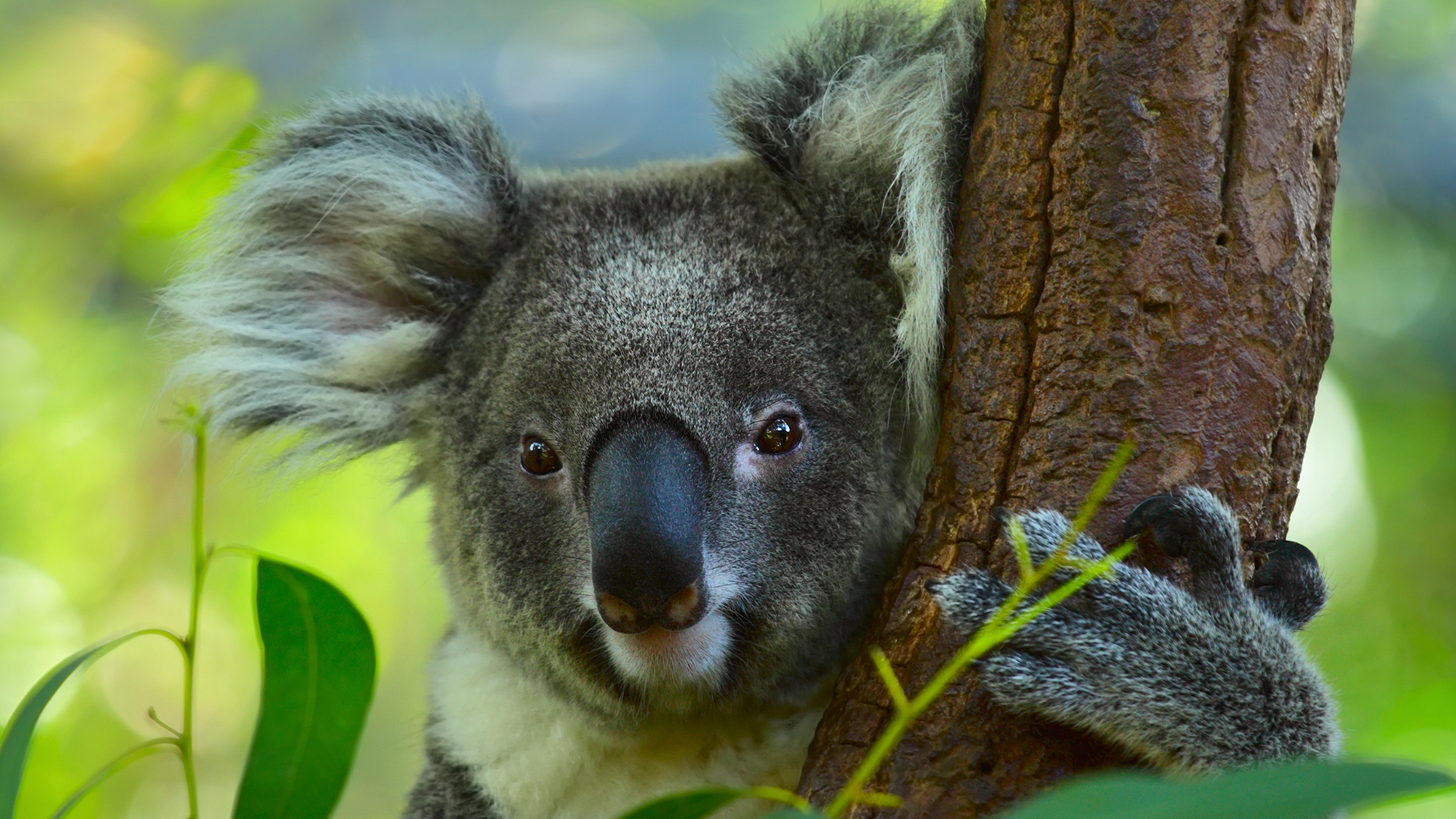

Scientists in Australia have just begun vaccinating wild koalas against chlamydia. This field trial in the state of New South Wales is an effort to protect one of Australia’s most beloved animals against the disease that can cause blindness, infertility, and death. The chlamydia epidemic in koalas has been ravaging populations of the marsupial since the 1990s.
[Related: A new vaccine may curb the koala chlamydia epidemic.]
Koalas along the east and southeast Australian coasts have been particularly affected, with some populations having infection rates of up to 100 percent. In 2021, Australia Zoo Wildlife Hospital veterinarian and research coordinator Amber Gillett called chlamydia one of the most significant threats to koalas and treatment after infection is not enough to save them. “Although many koalas with chlamydia can be treated using traditional antibiotics, some animals cannot be saved due to the severity of their infection. Having a vaccine that can help prevent both infection and the severity of the disease is a critical element in the species’ conservation management.”
While origins of the disease is koalas aren’t fully confirmed, but scientists believe that marsupials possibly caught the disease from exposure to the feces from infected cattle and sheep. Chlamydia then spread via sexual contact or was passed from mother to offspring.
This single-shot vaccine has been designed just for koalas and was tested in a few hundred fluffy specimens in wildlife rescue centers. For this new field trial, the team hopes to catch, vaccinate, and subsequently monitor about half of the koala population living in the Northern Rivers region of New South Wales–about 50 koalas.
“It’s killing koalas because they become so sick they can’t climb trees to get food, or escape predators, and females can become infertile,” Samuel Phillips, a microbiologist at the University of the Sunshine Coast who helped to develop the new vaccine, told the Associated Press.
The first koalas were caught and vaccinated in March, and the effort is expected to last for three months. To find them, the team spots koalas in eucalyptus trees to then build circular enclosures around the base of the trees with doors that lead into cages. Eventually, the koalas climb down from one tree to get more eucalyptus leaves from another tree and wander into the traps.
They are then given a check-up to assess their health and given anesthesia before getting the vaccine. They are kept under observation for 24 hours after waking up to check for unexpected side effects, according to Jodie Wakeman, the veterinary care and clinical director at Friends of the Koala. The nonprofit organization runs a wildlife hospital where the koalas are getting vaccinated.
[Related: How to handle a koala-chlamydia epidemic.]
The koalas are marked with a pink dye on their backs so that the same animals are not caught twice before being released back into the wild.
Australia’s federal government declared that the koalas in the eastern regions of New South Wales, Queensland, and the Australian Capital Territory were endangered. A 2020 report from the New South Wales government found that the unique creatures could become extinct by 2050 due to disease, road collisions, and habitat loss. Climate change is only exacerbating the problem.
The trial was approved by multiple Australian governing bodies balancing the risk of disturbing the marsupials against the danger of allowing chlamydia to continue to spread unchecked. It is one of only a few worldwide examples of scientists attempting to inoculate endangered wildlife for the purposes of conservation. In 2016, a team began to vaccinate Hawaiian monk seals morbillivirus and in 2020, biologists in Brazil started vaccinating golden lion tamarins against yellow fever.
“Vaccination for wildlife is certainly not routine yet,” Jacob Negrey, a biologist at Wake Forest University School of Medicine told the AP. “But whether it should be used more often is a fundamental question that conservation biologists are really wrangling with right now.”